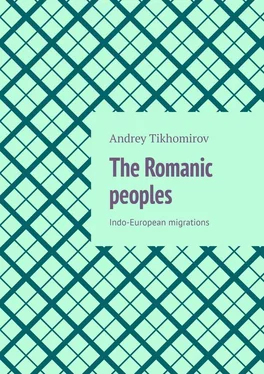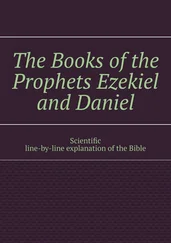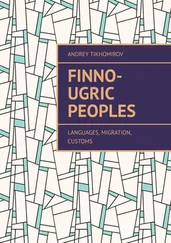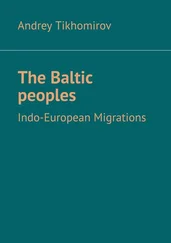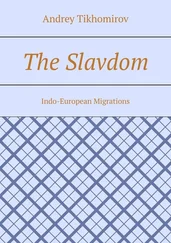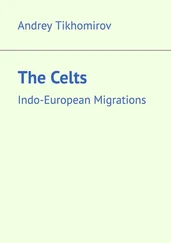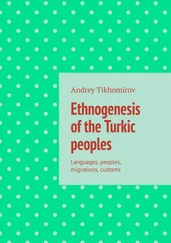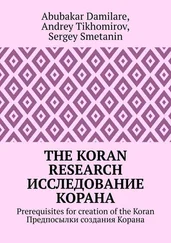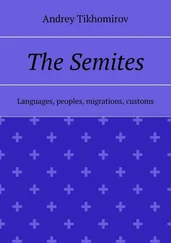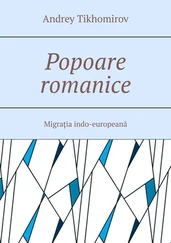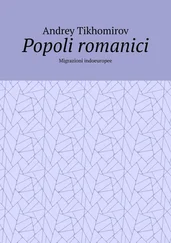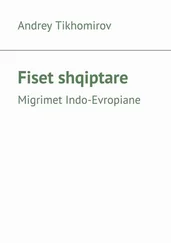Andrey Tikhomirov - The Romanic peoples. Indo-European migrations
Здесь есть возможность читать онлайн «Andrey Tikhomirov - The Romanic peoples. Indo-European migrations» — ознакомительный отрывок электронной книги совершенно бесплатно, а после прочтения отрывка купить полную версию. В некоторых случаях можно слушать аудио, скачать через торрент в формате fb2 и присутствует краткое содержание. ISBN: , Жанр: Языкознание, История, на английском языке. Описание произведения, (предисловие) а так же отзывы посетителей доступны на портале библиотеки ЛибКат.
- Название:The Romanic peoples. Indo-European migrations
- Автор:
- Жанр:
- Год:неизвестен
- ISBN:9785449822024
- Рейтинг книги:3 / 5. Голосов: 1
-
Избранное:Добавить в избранное
- Отзывы:
-
Ваша оценка:
- 60
- 1
- 2
- 3
- 4
- 5
The Romanic peoples. Indo-European migrations: краткое содержание, описание и аннотация
Предлагаем к чтению аннотацию, описание, краткое содержание или предисловие (зависит от того, что написал сам автор книги «The Romanic peoples. Indo-European migrations»). Если вы не нашли необходимую информацию о книге — напишите в комментариях, мы постараемся отыскать её.
The Romanic peoples. Indo-European migrations — читать онлайн ознакомительный отрывок
Ниже представлен текст книги, разбитый по страницам. Система сохранения места последней прочитанной страницы, позволяет с удобством читать онлайн бесплатно книгу «The Romanic peoples. Indo-European migrations», без необходимости каждый раз заново искать на чём Вы остановились. Поставьте закладку, и сможете в любой момент перейти на страницу, на которой закончили чтение.
Интервал:
Закладка:
The Romanic peoples
Indo-European migrations
Andrey Tikhomirov
© Andrey Tikhomirov, 2020
ISBN 978-5-4498-2202-4
Created with Ridero smart publishing system
Indo-European peoples
Indo-European languages – one of the largest language families in the world, which includes the following groups: Hitto-Luwian, or Anatolian; Indo-Aryan, or Indian; Iranian Armenian Phrygian; Greek Thracian; Albanian; Illyrian; Venetian Italian Romance Celtic German baltic; Slavic Tocharian; et al. Presented on all inhabited continents of the Earth, the number of speakers exceeds 2.5 billion. According to the views of modern linguists, it is part of the macro-family of Nostratic languages, the Indo-European language, according to the hypothesis of the Danish scientist H. Pedersen, developed by V.M. Illich-Svitych and S.A. Starostin, is included in the nostratic (from the Latin word noster) macro-family of languages, among which he is especially close to the Kartvelian languages (Georgian, Mingrelian, Chan, Svan), which, like him, have an ablaut (alternating vowels in the same morpheme). Danish linguist X. Pedersen at one time put forward a hypothesis about the genetic connection of the languages of several largest families, which were considered unrelated. Scientific studies have shown the validity of combining Indo-European, Semitic, Hamitic, Uralic, Altai and some languages into a large nostratic macro-family of languages. This macrofamily has developed in the Upper Paleolithic on the territory of South-West Asia and its adjacent areas. During the retreat of the last Wurm glaciation and climatic warming in the Mesolithic, the Nostratic tribes settled throughout the vast territory of Asia and Europe; they pushed aside and partially assimilated the tribes that had lived there before. In this historical process, the Nostratic tribes formed a number of isolated areas where the formation of special language families began. The largest of them, the Indo-European language community, began to form on the territory of the Southern Urals, and then in the “Great Steppe” – from Altai to the Black Sea.
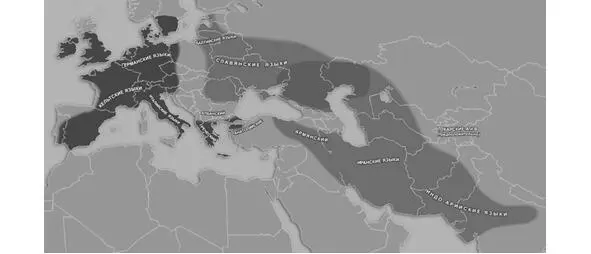
Indo-European areas of Kentum (blue) and Satem (red). The estimated initial area of satelliteisation is shown in bright red. Kentum-satem division is called isogloss in the Indo-European language family, related to the evolution of three rows of dorsal consonants reconstructed for the Pra-Indo-European language (PIE), * k-W (labio-velar), * k (velar), and * k; (chamber). The terms are derived from words meaning the numeral “hundred” in the representative languages of each group (Latin centum and Avestan satem).
Archaeological studies show that the homeland of the Indo-Europeans is the region of the Southern Urals, where they formed as a single language group. Indo-European languages are formed in ancient times and come from a single pra-Indo-European language, whose speakers lived about 5—6 thousand years ago. In 1903, Keshav Gangadhar Tilak (1856 – 1920 years of life) wrote the book “The Arctic House in the Vedas.” In it, he argued that the Vedas could only be composed in the Arctic, and the Aryan (Indo-European) bards brought them south after the start of the last ice age. On the territory of the South Urals, ancient beliefs are formed, which became the basis of the following religions: Vedism and Mazdaism, which, in turn, developed from primitive beliefs. Borrowing from each other and from previous beliefs, various ideas and ideas are created on the basis of the specific conditions of human existence, such faiths as: Vedism – Brahmanism – Hinduism, in the VI century BC, Buddhism and Jainism arise as an opposition to Brahmanism, which sanctifies caste system in India. Zoroastrianism – Mithraism in Iran (the word “Iran” goes back to the word “Arian”, and it, in turn, goes to the word “Arias” – “ram, aries”, in Latin “aries”, “an ancient totem animal of the inhabitants of the Southern Urals” Judaism – Christianity – Islam in Asia Minor, Shintoism in Japan, Taoism and Confucianism in China.
Gradual warming caused the melting of glaciers, which receded to the north, and the earth began to awaken to life, young shoots appeared – plants, they were eaten with pleasure by animals that migrated along with the melting of glaciers. Primitive hunters who hunted for migrating animals followed the animals. The Ural ridge was the center of glaciation of the Urals, ice from the mountains flowed from the ridge in the lowlands during warming, forming seas and lakes, glaciers of the Ural Mountains gave rise to icebergs in the Arctic Ocean. Ancient glaciation was more clearly expressed in the north of the Ural Mountains: in the Polar and Subpolar Urals. In the Holocene (15—10 thousand years ago, the postglacial epoch), due to significant climate warming, the size of the ancient Pleistocene (Lower Quaternary) glaciation decreased sharply. At this time, most of the glaciers of the Urals disappear. A new cooling in the Urals during the so-called sub-Atlantic period (the middle of the 1st millennium BC – 3—4 centuries AD) led to the appearance of new glaciers that preceded the modern ones.
Ancient Indo-Europeans build special closed villages. Indo-Europeans learned to mine swamp ores and smelting iron from them. Iron was affordable and cheap metal for them. Iron ores are more widespread than copper and bronze, and therefore no monopoly on this metal has arisen: its ores in large quantities are formed under the influence of microorganisms in swamps and other standing bodies of water. And the area of resettlement of the Aryans was just characterized by an abundance of lakes and wetlands. Iron was easily mined, but its smelting and processing required certain skills, which gave impetus to the widespread development of blacksmithing and other crafts. Iron tools replaced soft bronze and finally replaced the stone. Through the use of iron sickles, plowshares, scythes and axes, necessary for conducting slash-and-burn agriculture, Aryan agriculture began to develop more intensively. Settlements began to form everywhere, between which lively trade was established over time.
The general meaning here was most likely in the following. The ancient Aryans used these marshy lands to obtain ore, when the ore was depleted, the villages were burned, the ditches were filled up. Therefore, the villages existed for about 100—200 years. The main thing was to keep the secret of technology (know-how) for the manufacture of various metal products using metallurgy techniques, so that other tribes would not know about it and leave competition.
According to one hypothesis, the ancient Aryans made a gigantic movement from the southern Ural steppes through southern Ukraine, the Balkan Peninsula to Mycenae, and then to Iran and India. It is possible that it was they who brought to Mykonos and Asia Minor a horse-breeding culture, previously unknown there, the art of making and using war chariots. The oldest chariot found in the world from the Arkaim culture (dated 2026 BC).
Chariots and images of horses from Arkaim (1, reconstruction), Persepolis (2 Iran), Egypt (3), Sumer (4):
(1)
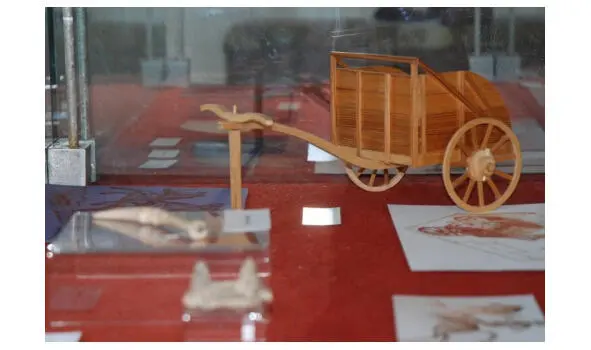
(2)

(3)
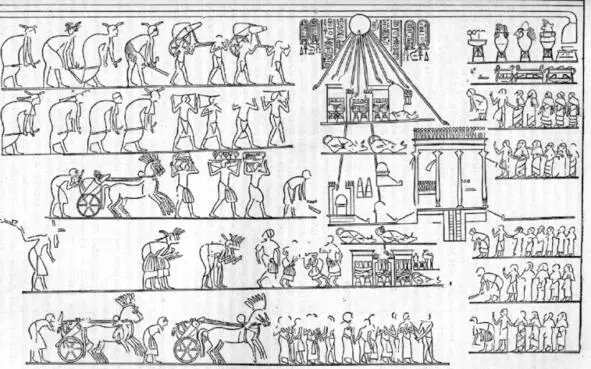
(4)
Читать дальшеИнтервал:
Закладка:
Похожие книги на «The Romanic peoples. Indo-European migrations»
Представляем Вашему вниманию похожие книги на «The Romanic peoples. Indo-European migrations» списком для выбора. Мы отобрали схожую по названию и смыслу литературу в надежде предоставить читателям больше вариантов отыскать новые, интересные, ещё непрочитанные произведения.
Обсуждение, отзывы о книге «The Romanic peoples. Indo-European migrations» и просто собственные мнения читателей. Оставьте ваши комментарии, напишите, что Вы думаете о произведении, его смысле или главных героях. Укажите что конкретно понравилось, а что нет, и почему Вы так считаете.
